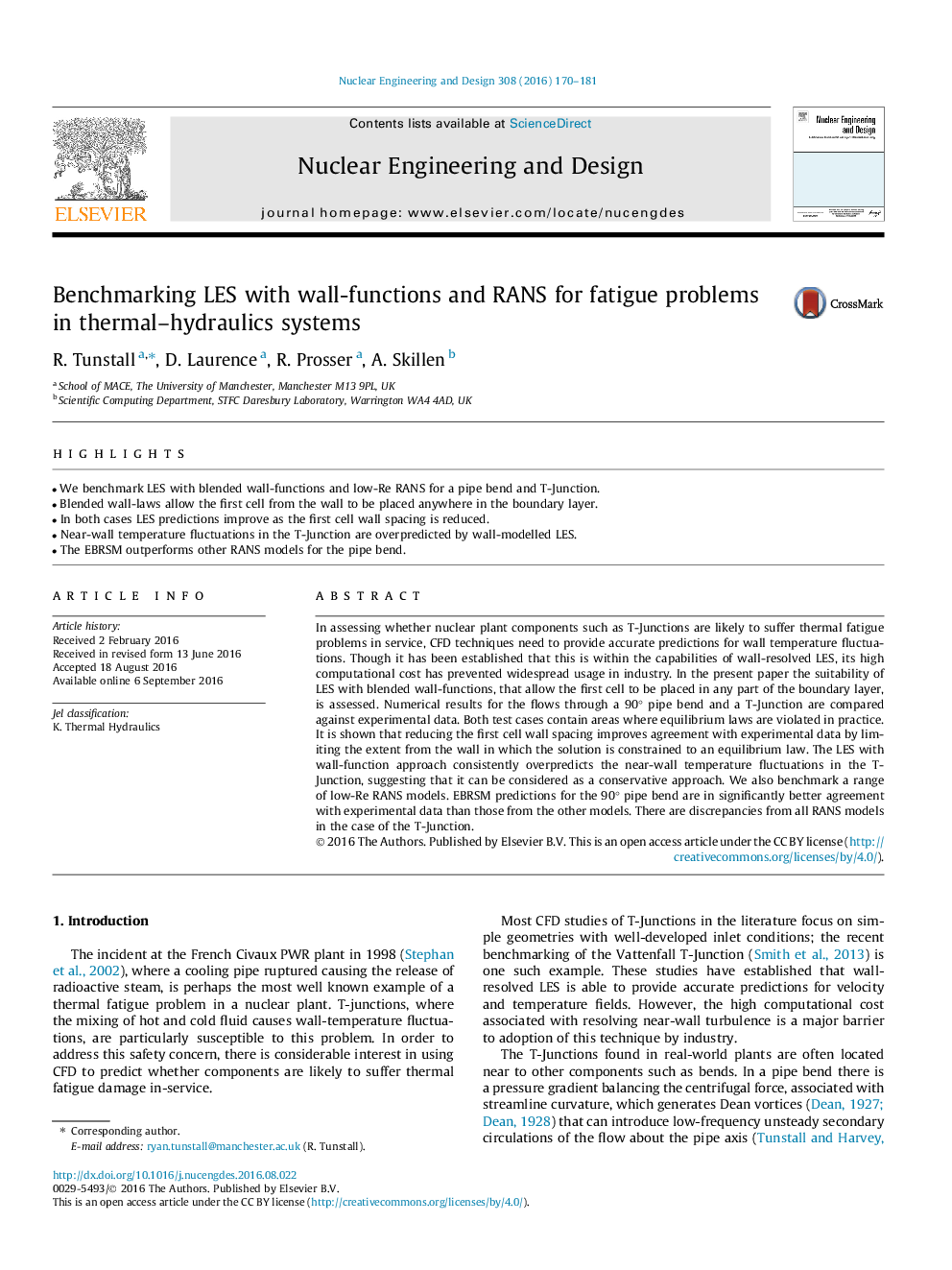| کد مقاله | کد نشریه | سال انتشار | مقاله انگلیسی | نسخه تمام متن |
|---|---|---|---|---|
| 4925832 | 1431413 | 2016 | 12 صفحه PDF | دانلود رایگان |

- We benchmark LES with blended wall-functions and low-Re RANS for a pipe bend and T-Junction.
- Blended wall-laws allow the first cell from the wall to be placed anywhere in the boundary layer.
- In both cases LES predictions improve as the first cell wall spacing is reduced.
- Near-wall temperature fluctuations in the T-Junction are overpredicted by wall-modelled LES.
- The EBRSM outperforms other RANS models for the pipe bend.
In assessing whether nuclear plant components such as T-Junctions are likely to suffer thermal fatigue problems in service, CFD techniques need to provide accurate predictions for wall temperature fluctuations. Though it has been established that this is within the capabilities of wall-resolved LES, its high computational cost has prevented widespread usage in industry. In the present paper the suitability of LES with blended wall-functions, that allow the first cell to be placed in any part of the boundary layer, is assessed. Numerical results for the flows through a 90° pipe bend and a T-Junction are compared against experimental data. Both test cases contain areas where equilibrium laws are violated in practice. It is shown that reducing the first cell wall spacing improves agreement with experimental data by limiting the extent from the wall in which the solution is constrained to an equilibrium law. The LES with wall-function approach consistently overpredicts the near-wall temperature fluctuations in the T-Junction, suggesting that it can be considered as a conservative approach. We also benchmark a range of low-Re RANS models. EBRSM predictions for the 90° pipe bend are in significantly better agreement with experimental data than those from the other models. There are discrepancies from all RANS models in the case of the T-Junction.
Journal: Nuclear Engineering and Design - Volume 308, November 2016, Pages 170-181